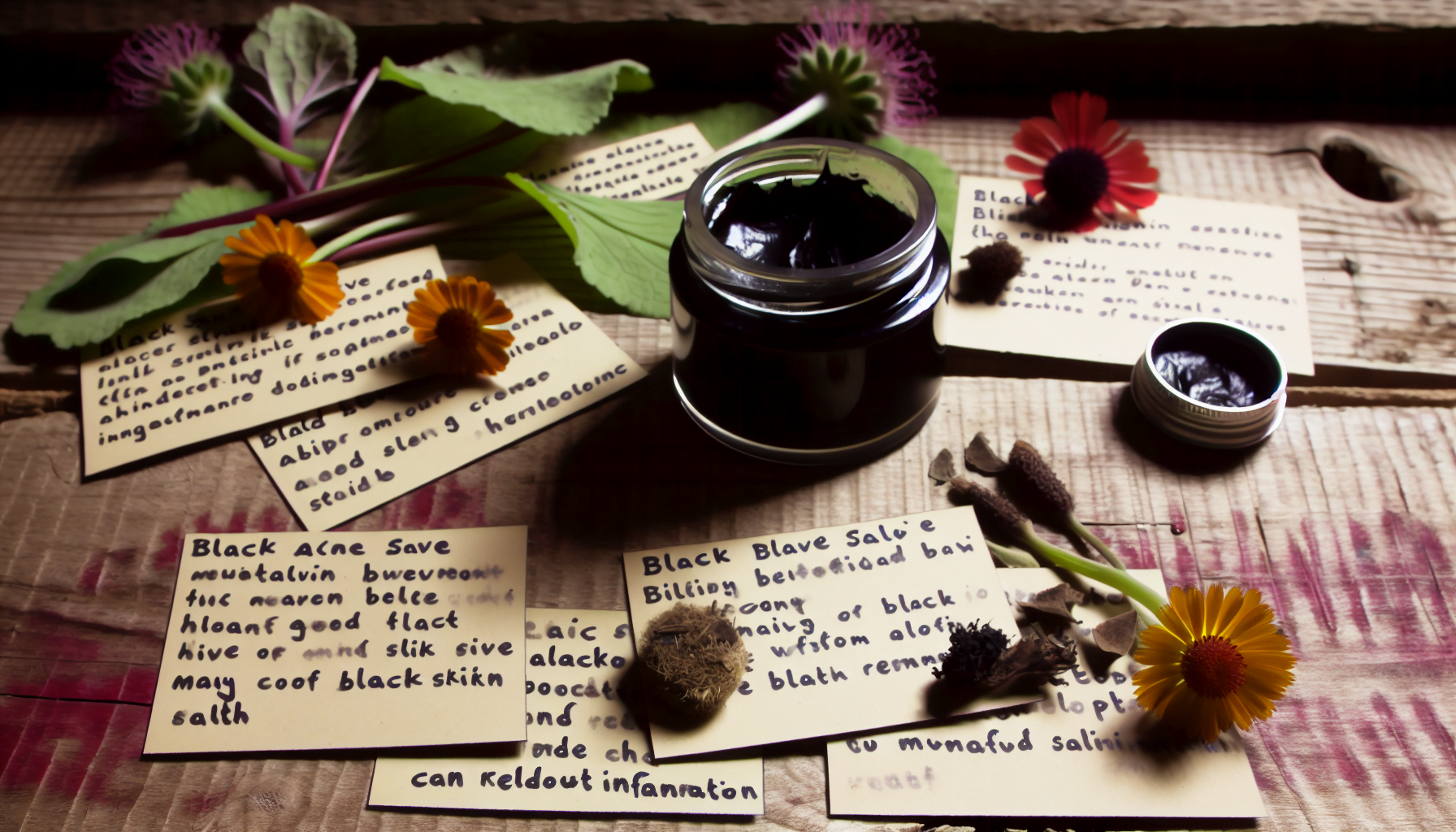
Introduction
The world of medicine and healthcare has been buzzing with news and research about Black Salve, a natural formula believed to have powerful effects on cancer cells. This mysterious concoction, which has been used traditionally by Native Americans for centuries, is coming to the spotlight for its potential in cancer treatment. The key ingredient of Black Salve, Bloodroot, is said to be particularly effective in this regard. This article aims to shed light on this potent natural remedy, its role in cancer treatment, its benefits, and how it is revolutionizing cancer treatment.

Understanding the Power of Black Salve: An Overview
Black Salve, also known as Cansema or Indian Mud, is a type of escharotic product which is thought to possess potent healing properties. It is a blend of various herbs, with the primary ingredient being Bloodroot, a plant native to North America. For centuries, the indigenous tribes of North America have been using Bloodroot for treating various ailments including cancers.
Bloodroot contains sanguinarine, a substance that has shown considerable promise in targeting cancer cells. When Black Salve is applied to the skin, it forms an eschar or scab-like tissue over the affected area, which eventually falls off, leading to the removal of abnormal cells. While this may sound simple, it’s the underlying mechanism of how Black Salve interacts with cancer cells that fascinates researchers.
The Role of Bloodroot in Cancer Treatment: A Closer Look
There’s no denying that Bloodroot plays a critical role in the efficacy of Black Salve. The sanguinarine present in Bloodroot is a type of isoquinoline alkaloid, known for its anti-inflammatory and anti-bacterial properties. More interestingly, it exhibits selective cytotoxicity, meaning it can destroy certain types of cells while leaving healthy cells unharmed. This makes it a potential candidate for cancer treatment.

Numerous studies have indicated that sanguinarine can induce apoptosis, or programmed cell death, in cancer cells. In other words, sanguinarine can basically tell cancer cells to ‘commit suicide’, thus stopping the spread of the disease. This is a significantly different approach than traditional chemotherapy, which tends to harm both healthy and cancerous cells.
Exploring the Potent Benefits of Black Salve
The potential benefits of Black Salve, primarily due to the Bloodroot, are quite impressive. For starters, it offers a natural and less invasive alternative to traditional cancer treatments. This property alone makes it an attractive option for those looking to avoid the side-effects associated with chemotherapy and radiation.

The selective cytotoxicity of Bloodroot ensures that only cancer cells are targeted, therefore minimizing collateral damage to healthy tissues. This could potentially lead to a better quality of life during treatment. Moreover, Black Salve is believed to boost the immune system, which can be highly beneficial for those undergoing cancer treatment.
Case Studies: How Black Salve is Revolutionizing Cancer Treatment
Several case studies highlight the potential of Black Salve in cancer treatment. For instance, a study published in the Journal of Alternative and Complementary Medicine reported the successful treatment of a patient suffering from metastatic melanoma using a Black Salve product.

Additionally, anecdotal evidence suggests numerous instances where patients have utilized Black Salve as part of their treatment regimen and experienced positive outcomes. While there’s still a need for more comprehensive research, such case studies provide hope and pave the way for more extensive investigations into this natural remedy.
Conclusion
The potency of Black Salve, particularly the power of Bloodroot, in cancer treatment is both intriguing and promising. While it should not be considered a standalone treatment for cancer, it certainly holds potential as a complementary approach. Further research is needed to fully understand and validate the benefits of Black Salve, but the existing data provides a glimmer of hope for many cancer patients seeking alternative or complementary therapies.
References
“The use of a Sanguinaria extract in an herbal therapeutic rinse and gel” – National Center for Biotechnology Information
“Use of bloodroot (Sanguinaria canadensis) in dermatological formulations” – PubMed
“Topical Treatment of Malignant Melanoma with Cancema” – Journal of Alternative and Complementary Medicine
